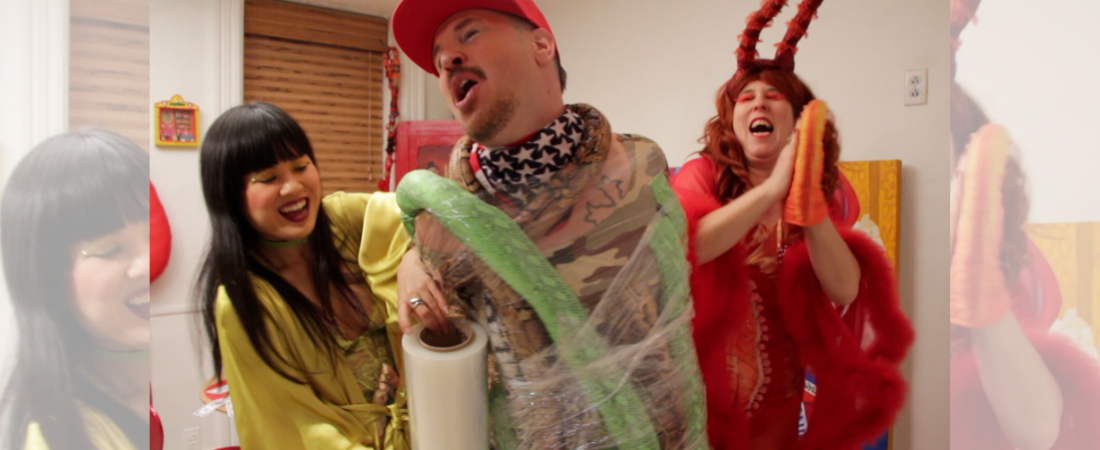The National Coalition Against Censorship has written to the Lyman Allyn Art Museum in New London, Connecticut, to urge them to restore a censored work. A video piece from a guest-organized exhibition was removed because it was “disturbing audiences” and was considered by the museum to be “inappropriate for children.” This act of censorship flies in the face of the museum’s obligations to its audience, as well as to the artists it exhibits and the curatorial collectives with whom it works.
The Nasty Women Connecticut organizers held their sixth annual exhibition, The Will to Change: Gathering as Practice, at the Lyman Allyn Museum. The organizers invited artists to submit a work for the show through an open call. The video Rebecca Goyette picked, “My Snake is Bigger Than Your Snake,” was put on display, together with all the other work, in the presence of the museum’s head of exhibitions. The exhibition opened on June 18 and will remain up through August 12, 2022. However, three days after it was displayed, Ms. Goyette’s work was taken down, and she was asked to offer a non-video piece instead. At the behest of the organizers, an explanatory statement placed next to the substitute piece acknowledged the censorship and attempted to mitigate it by adding a QR code linking to the video.
While the transparency provided by the explanatory statement is commendable, it does not change the fact that the work was censored. Ms. Goyette’s video does contain humorous and burlesque references to sex, but it is far from obscene or harmful to minors. In removing it the Museum leadership has made an arbitrary decision which silences an artist and deprives the audience of the chance to see the work.
References to sexuality are present in many artworks, both classical and contemporary. Seductive nudes and scenes of violence and rape grace the halls of most museums. Children and school groups visit and emerge unharmed. Contemporary feminist treatments of sexuality are, perhaps, more in your face, but, arguably, present a healthier, often funnier and more equitable viewpoint. Judging a work unsuitable for the museum solely because it references sexuality is both surprising and disappointing. And, if the reason is that the work’s references to sexuality lack the “decorum” of classical paintings, then the problem gets worse: there is a sad irony when a show, which gathers cutting edge work on gender, sexuality and change, is censored because of its flaunting of representational convention.
There exist a range of other options to address any concerns about underage audiences. There is the option of displaying signage informing audiences that art is often disturbing and that they should use their discretion in bringing their underage children – indeed, it is our understanding that such a sign was put at the entrance of the entire show. The Museum can also work with the organizers to adjust the placement of work to make pieces that some may consider unsuitable for children less prominent. The one option that a cultural institution should always avoid is the outright suppression of work.


